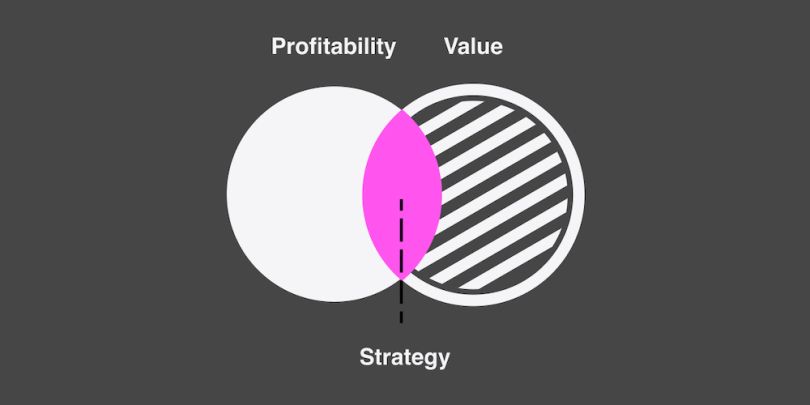
Design strategy is the point where what’s valuable for customers meets what’s profitable for businesses. Developing one involves creating a set of guiding principles that aligns the business’s mission and vision with the design of its products or services. A good strategy helps businesses figure out what to do next. In other words, it ensures that your team produces what your business needs to meet its customers’ needs.
Design strategy is the term used to describe the nexus between corporate strategy and design thinking. — Jahan Hussain
What Is Design Strategy?
Why Is Design Strategy Important?
Design strategy is essential for your business for three reasons.
- It’s cost-effective
- It gives you direction
- It helps you prioritize
Let’s analyze these items one by one.
Design Strategy Is Cost-Effective
When you don’t take the time to define a strategy, you might wake up one day and realize that you’ve spent two years and $80,000 building a product that doesn’t appeal to your target audience.
Design strategy allows you to clearly define who your target audience is, what they need and how you can create value for them. With a good stategy, your product launch won’t be a shot in the dark. Instead, you’ll have a research-backed product upon which you’ll be able to iterate and improve.
In his book Zero to One, Peter Thiel underlines the importance of building the right thing. No amount of iteration can fix a product that shouldn’t have been built in the first place. And the only way to know you’re on the right track is by having a thorough understanding of your users’ needs and how you’ll create value for them.
Design Strategy Gives You Direction
When the goal is clear, you empower every person in your team to make autonomous decisions that are in sync with your company’s objectives.
In psychology, a phenomenon called “decision fatigue” describes how making too many decisions wears down people’s capacity to make sound judgments when it matters most.
This principle is the reason why people like Barack Obama, Steve Jobs, and Mark Zuckerberg became notorious for always wearing the same outfit.
Do questions like this sound familiar:
“Should this be a primary button or a secondary button? Do we use photos instead of illustrations? How many pages should our marketing website have?”
A good design strategy takes all the trivial decision-making that surrounds your product out of the way, freeing up your team’s time to solve more creative problems like this: “Can we improve our conversion rate by removing this seemingly distracting step from our checkout flow?”
You’ll sleep better at night knowing your entire organization is working harmoniously to reach your monthly recurring revenue goals or cutting down your churn rate by half. A strategy will also free up your own time as a leader to make more higher-order decisions.
Design Strategy Helps You Prioritize
Often, being user-oriented is not enough.
Many user requests can be costly to build, taking up a lot of time to bring you only marginal gains. If you always do what your customers ask for, you may end up becoming a so-called feature factory.
Assuming you’re not swimming in cash, this modus operandi will dry out your business’ wallet quickly.
If you have a design strategy in place, however, your team will focus on the features that strike the best balance between high reward and low effort, creating the most value for the most significant amount of your customers. It’s a more sustainable way to drive revenue.
A design strategy will help your business decide what the next move — and the one after — should be. This clarity will allow you to be more effective in your decision-making process and gain a competitive advantage.





